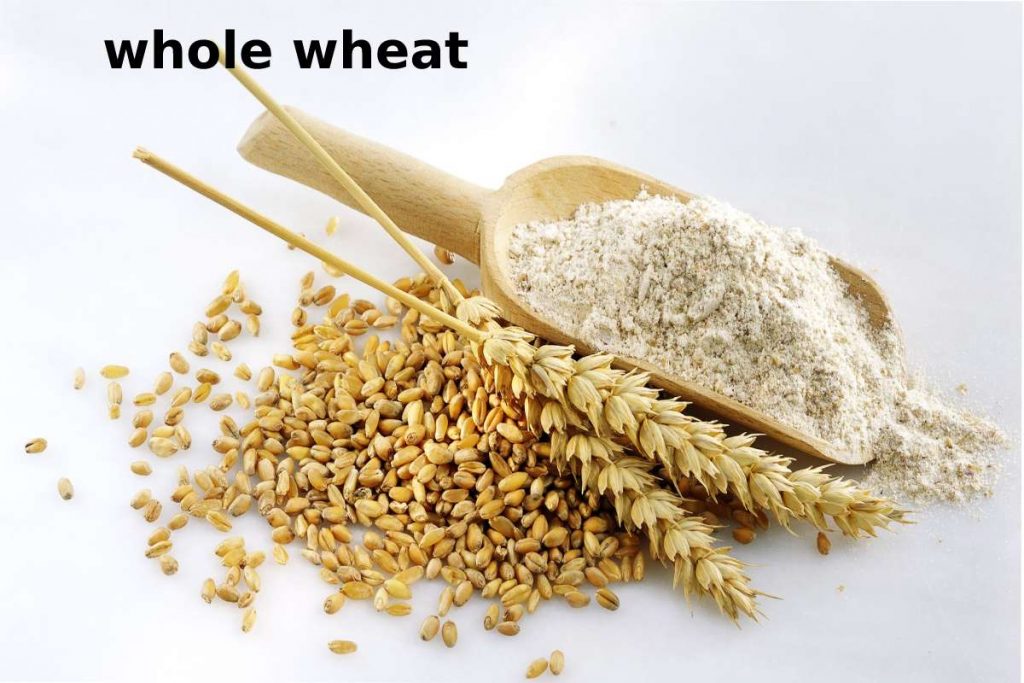Table of Contents
Definition
Whole Wheat intake said by Nutrition experts warn us every day. Introducing grain cereals into your diet can help prevent heart disease, diabetes, and high triglyceride levels. Likewise, eating whole foods made from grain cereals can help protect your body from colon cancer, asthma, and Alzheimer’s disease.
Since 100% of whole grains are a vital component to any nutritious diet, knowing this list of healthy whole grains may reveal an option you did not know in your daily menu. Even if you don’t want to complicate yourself in the kitchen, you can start with whole-grain pasta.
Whole wheat flour
You can easily find it in bread and pasta products, but make sure it’s 100% whole wheat. When buying any entire grain or whole-grain product, check the ingredients and make sure that the whole grain is 100% or at least is at the top of the list.
The legislation allows brands to sell their products as whole grains even though, in reality, it is a mixture of refined flour with bran. But the truth is that the effects on the body are not as beneficial.
Brown rice
Whenever you can, opt for brown rice, which includes brown, aromatic varieties like basmati and jasmine. If you want something more exotic, look for red and black rice, considered whole grains and rich in antioxidants. Wild or wild rice is technically an herb, also regarded as whole grain, rich in B vitamins, such as niacin and folate.
Whole oats
Oats are rich in avenantramide, an antioxidant that protects the heart. Have a preference for the whole grain version (the flakes), but if you buy instant (processed) oats, avoid those brands that contain high-fructose corn syrup. It is best to sweeten with a mixture of a bit of fruit (such as banana,
Rye
Incredibly, rye has more nutrients per 100 calories than any other whole grain. It has four times more fiber than whole wheat and provides nearly 50% of the recommended daily amount of iron. However, most of the rye bread in stores is made with refined flour. Look for whole-grain rye first in the ingredient list for healthy benefits.
Quinoa
It’s technically a seed that’s made up of more protein than any other grain, and each uncooked cup has 522 milligrams of omega-3fatty acids. It has a slightly nutty flavor, excellent for a change of taste at the table. It is ideal for salads, stir-frys, side dishes, and even soups.
Corn
If the corn is whole, it will be extremely healthy for you. It is a good source of B vitamins, magnesium, and phosphorus. It is believed to increase healthy gut flora, preventing diabetes, heart disease, and chronic inflammation. Yellow corn is also rich in antioxidants.
For its part, popcorn is an ideal way to consume it. You can buy the whole grains and make them in a saucepan with a bit of olive oil. Here’s how: how to make popcorn without a microwave.
But beware of the cans of corn that we find in the supermarket under the name of “sweet corn” because they usually contain a surprising and unnecessary amount of sugar.
Whole-wheat couscous
The healthiest couscous is whole wheat. You’ll find it more easily in healthy food stores. If you skip the refined version and look for the whole-grain type, it will give you an additional 5 grams of fiber for each serving.
Whole grain barley
Including half a full cup of barley in your daily diet helps normalize cholesterol levels. If you add raisins or dried apricots to the quick-cooking barley, it can also serve as a garnish. Just make sure it’s whole barley and not pearly, which means the bran and germ have been removed.
Buckwheat
The situation is one of the best sources of magnesium-based on grains, an excellent mineral for the body. It helps with PMS symptoms by improving nerve functioning, for example. It is similarly rich in manganese, which promotes brain function.
You can include it in stews, sauces, and pastry preparations. When cooking, you can boil it, steam it or hydrate it before cooking.
Bulgur
It is considered a very beneficial whole grain. It is an excellent source of iron and magnesium, which is used to make tabbouleh salad. The energy source of fiber and protein can be used in any salad or soups. One cup contains almost 75% of the dietary fiber you need for the day and 25% of the protein you should get for your body. In addition, it cooks in just a few minutes.


